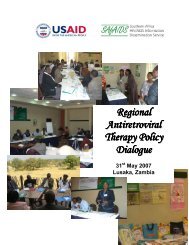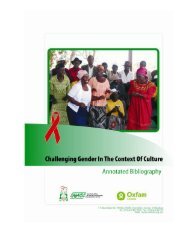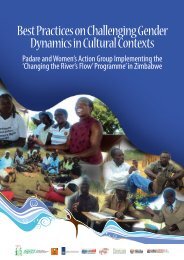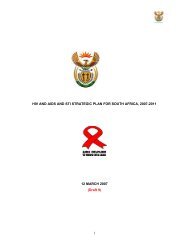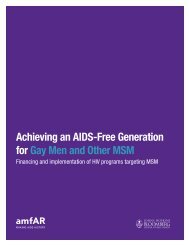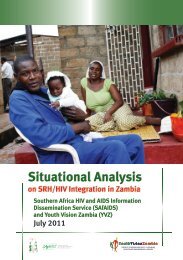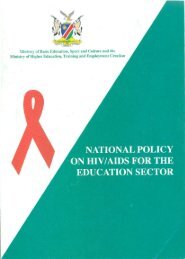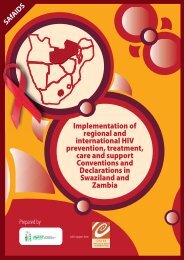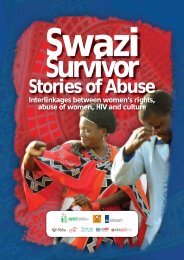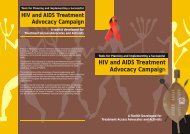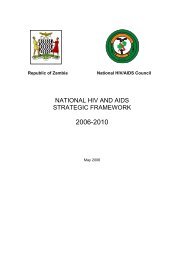Zimbabwean stories of "Best Practice" - SAfAIDS
Zimbabwean stories of "Best Practice" - SAfAIDS
Zimbabwean stories of "Best Practice" - SAfAIDS
Create successful ePaper yourself
Turn your PDF publications into a flip-book with our unique Google optimized e-Paper software.
ReplicabilityThe project has been efficient in documenting its activities and processes and has a complement <strong>of</strong> materialswhich include:• Annual reports• Half-yearly reports• Quarterly reports• Monthly reports• Baseline survey report• Monitoring reports• Financial Manual Policy• Human Resources Policy• Children's PolicyThis extensive documentation <strong>of</strong> the activities that the programme is conducting ensures easy replicationfor those planning a similar initiative. It also guarantees transparency as well as illustrating the steps andprocesses taken, lessons learnt and directions for the future <strong>of</strong> the programme.According to the SADC Framework for HIV and AIDS <strong>Best</strong> Practices, replicability <strong>of</strong> a programme isguaranteed by its acknowledgement <strong>of</strong> the need to discover interventions that set an example. The SEVACAHBC programme sets an example to other community initiatives seeking to advocate for cultural reformsaround gender within the context <strong>of</strong> increased HIV infection risk. It has done this by using HBC - a commonand uncontroversial HIV-related service - as a means to gaining stakeholders' acceptance as well as greateraccess to the community to discuss important cultural issues.InnovativenessThere are three elements that define innovation in SEVACA's SHC intervention. They are a 'frontline role'for community leadership and use <strong>of</strong> 'lifeline' service as a basis for tackling sensitive cultural practicespromoting the spread <strong>of</strong> HIV.It is common practice to involve local leadership in the launch <strong>of</strong> community projects or programmes.However, the norm rather than the exception is to invite the leadership to be present at the launch as apublic gesture <strong>of</strong> their approval <strong>of</strong> the intervention. The certification <strong>of</strong> their presence takes the form <strong>of</strong>either taking photographs <strong>of</strong> them in the company <strong>of</strong> project proponents or recording their openingspeeches, if any. These scenes are then archived or documented as evidence or living testimony <strong>of</strong> theinvolvement <strong>of</strong> local leadership in a particular intervention.The SEVACA project went beyond 'speechifying' by the local leadership. The chief was the Facilitator <strong>of</strong>the launch session but it did not end there. After facilitating the launch <strong>of</strong> the HBC project, the chief andhis team <strong>of</strong> local leadership, who included counsellors and headmen were enlisted for caregiver trainingand became some <strong>of</strong> the first volunteer caregivers in the area. These community leaders managed toprompt and culture the spirit <strong>of</strong> volunteership by leading by example. This motivated other men to followsuit. As <strong>of</strong> the time the documentation was carried out, 58 out <strong>of</strong> 850 caregivers were men. This number<strong>of</strong> males involved in care-work is a remarkable achievement given the highly patriarchal nature <strong>of</strong> Shangaan-Hlengwe society.The use <strong>of</strong> a 'lifeline' service such as home-based care (HBC) as a basis for tackling sensitive cultural practicespromoting the spread <strong>of</strong> HIV is notable. The SHC used their HBC activities to provide an entry point forinterrogating the local cultural practices.67



